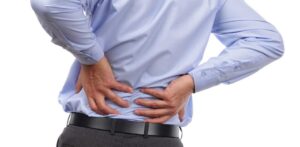Relieve Back Pain with Traction: A Gentle Approach to Reduce Pain Levels
Back pain is a prevalent ailment that affects millions of people worldwide, causing discomfort, reduced mobility, and diminished quality of life. While there are various treatment options available, one lesser-known but effective method is to relieve back pain with traction. Traction involves gentle stretching of the spine to decompress and relieve pressure on the affected areas. In this blog post, we will explore the benefits of traction and how it can help reduce back pain levels, providing a path towards a more pain-free and active life.

Understanding Back Pain
Back pain can stem from numerous causes, such as poor posture, muscle strains, herniated discs, or degenerative conditions like arthritis. The spine, composed of vertebrae, discs, and soft tissues, supports the body’s weight and enables movement. When these components become misaligned or compressed, it can lead to pain and discomfort.
How Traction Works
Traction is a therapeutic technique that involves applying gentle force to the spine to stretch and decompress it. This process aims to create space between the vertebrae, easing pressure on the discs and nerves. Traction can be administered using various methods, such as manual traction performed by a skilled therapist, mechanical traction devices, or inversion tables that allow the body to hang upside down.
Benefits of Traction for Back Pain
- Pain Relief: Traction helps reduce pressure on pinched nerves and alleviates muscle tension, resulting in significant pain reduction for individuals suffering from chronic back pain.
- Improved Spinal Alignment: By gently stretching the spine, traction encourages realignment of the vertebrae and reduces stress on the intervertebral discs, promoting better posture and spinal health.
- Enhanced Disc Health: The decompression effect of traction facilitates nutrient and fluid exchange within the spinal discs, promoting healing and preventing further degeneration.
- Increased Flexibility and Mobility: Traction can improve joint mobility and flexibility, allowing individuals to perform daily activities with greater ease and reduced discomfort.
- Non-Invasive Approach: Unlike surgical interventions or invasive treatments, traction is a non-invasive method to manage back pain, minimizing the risk of complications and downtime.
Using Traction Safely
While traction can be highly beneficial for many individuals, it is essential to use it safely and correctly. It is advisable to consult with a qualified healthcare professional before attempting traction, as they can assess your specific condition and recommend the most appropriate technique. Additionally, traction should not be used by pregnant women, individuals with certain medical conditions (e.g., spinal fractures, infections), or without proper supervision.
Complementing Traction with Lifestyle Changes
Traction can be more effective when combined with other healthy practices that support spinal health and overall well-being. Here are some lifestyle changes that can complement traction therapy:
- Exercise: Engage in low-impact exercises, such as swimming, walking, or yoga, to strengthen the back muscles and improve flexibility.
- Maintain Good Posture: Be conscious of your posture during daily activities and work to maintain a neutral spine position to reduce unnecessary strain on the back.
- Ergonomic Workspaces: Ensure your workspace is set up ergonomically, with an adjustable chair, proper desk height, Inversion Tables and a supportive chair cushion.
- Weight Management: Maintain a healthy weight to reduce stress on the spine and joints.
Back pain can be a debilitating condition that hinders your ability to enjoy life fully. Incorporating traction into your pain management regimen can offer numerous benefits, including pain relief, improved spinal health, and enhanced mobility. Remember to consult a healthcare professional before attempting traction, and consider adopting healthy lifestyle changes to support your spinal health further.
By taking a holistic approach and incorporating traction along with lifestyle modifications, you can work towards reducing back pain levels and embrace a more active and pain-free life. Remember, each person’s condition is unique, so it’s crucial to work with healthcare professionals to tailor a treatment plan that suits your individual needs.
